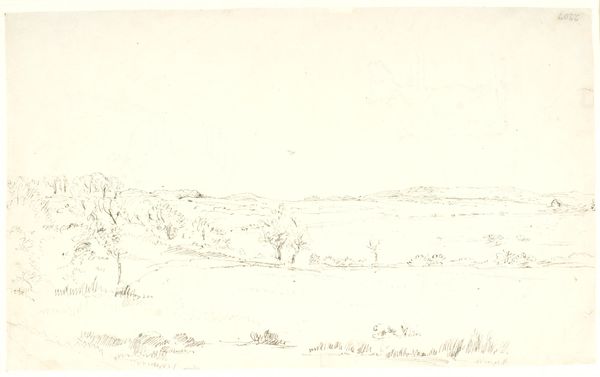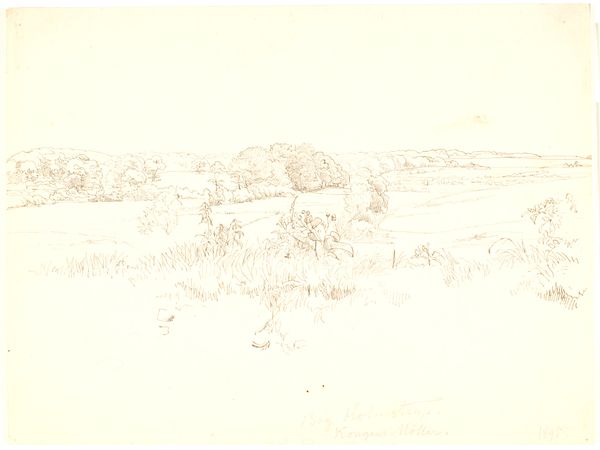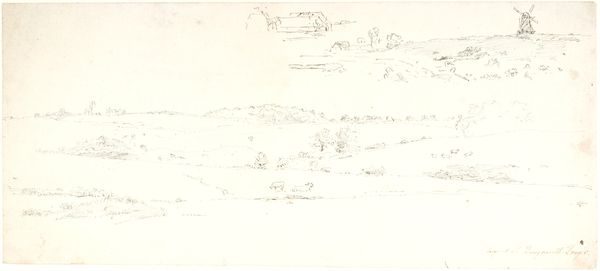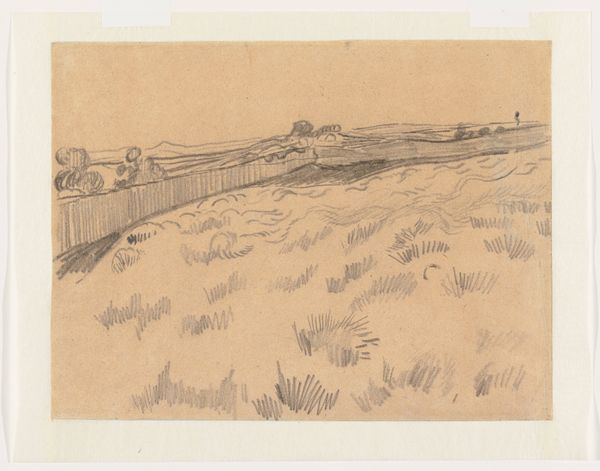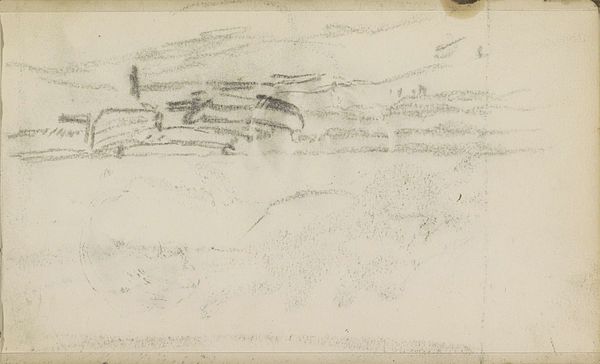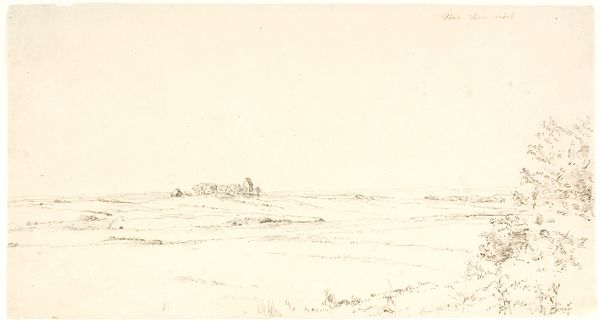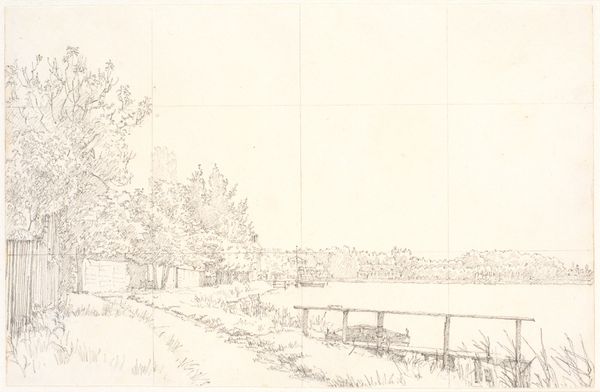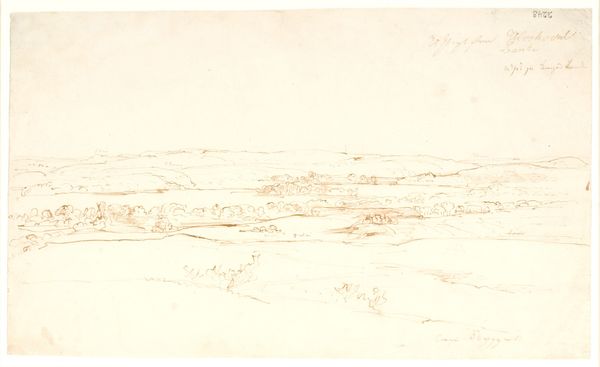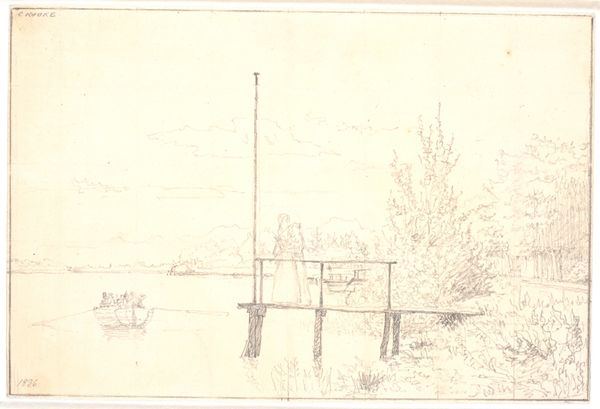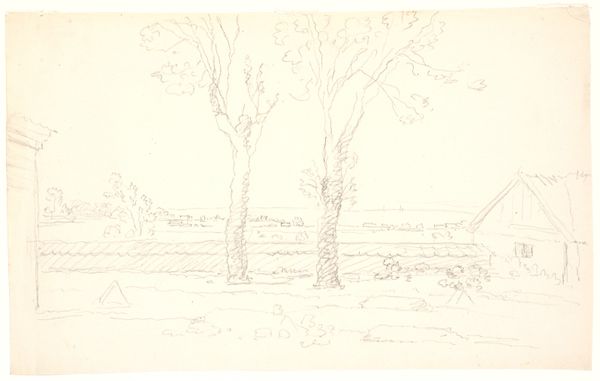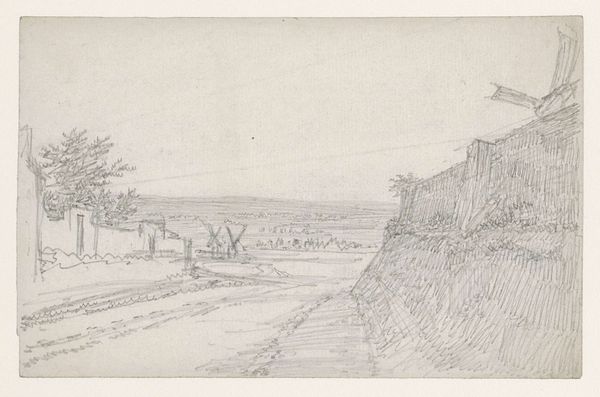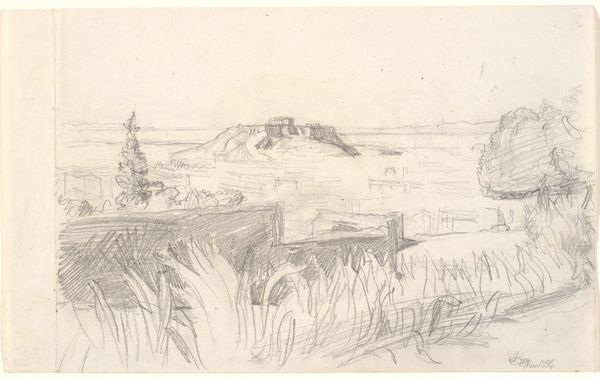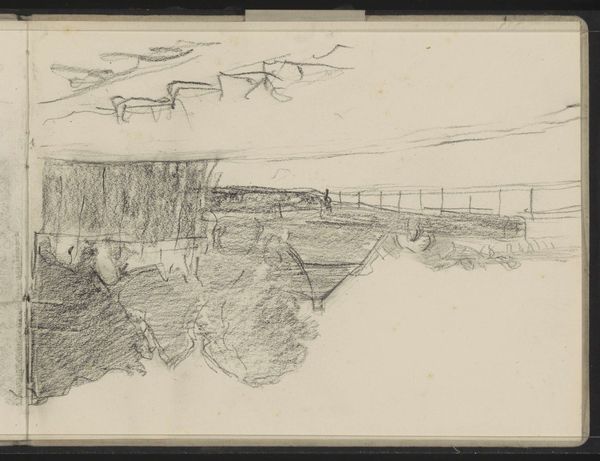
Vid udsigt over et (jysk?) landskab med lange bakkelinjer, i forgrunden t.v. en bro over en å 1840s
0:00
0:00
drawing, etching, ink, pencil
#
drawing
#
etching
#
landscape
#
etching
#
form
#
ink
#
ink drawing experimentation
#
romanticism
#
pencil
#
line
#
realism
Dimensions: 200 mm (height) x 336 mm (width) (bladmaal)
Editor: This is "View of a (Jutland?) Landscape with Long Hills, in the Foreground to the Left a Bridge over a Stream" by Dankvart Dreyer, made in the 1840s. It looks like it's done in pencil, etching, and ink. I'm struck by how spare it is, almost ghostly, yet it captures the vastness of the landscape. What can you tell me about it? Curator: This unassuming drawing offers insight into the complex relationship between art, nationhood, and emerging technologies of image production in 19th-century Denmark. Dreyer’s choice of rendering a seemingly ordinary, rural scene through etching and drawing is itself a statement. What kind of statement, would you suggest? Editor: Maybe he's trying to find the beauty in the everyday? Most art in this period seemed to celebrate classical themes and great people, and landscape as an art form was more of a backdrop. Was he consciously making it a statement? Curator: Precisely. This "ordinary" scene acquires political weight when viewed through the lens of Danish nationalism. In the wake of significant territorial losses, artists turned to the local landscape to cultivate a sense of shared identity and belonging. Also, the growing popularity of printmaking meant art became more democratic; works were no longer exclusively for the elite. Do you see how this connects to ideas of nation-building? Editor: It’s like he’s saying, "this is our land, this is who we are". It's interesting how the medium itself helps to democratize the idea. Suddenly everyone can possess an etching of Jutland. So, is it about promoting national unity through art? Curator: Yes, the piece performs as both a picturesque view and a tool for ideological cohesion. Art historians examine these images to see the artistic manifestation of nationalist ideology and how artists actively participated in shaping cultural consciousness. This is why something like a drawing can become quite politically charged. Editor: Wow, I hadn't considered how something that looks like a simple landscape sketch could carry so much meaning about national identity. I will certainly never look at landscape drawings in the same way. Curator: That's great. By considering how museums, galleries, and socio-political forces shape the production and reception of art, we can truly understand a piece.
Comments
No comments
Be the first to comment and join the conversation on the ultimate creative platform.
